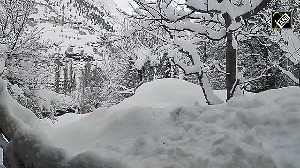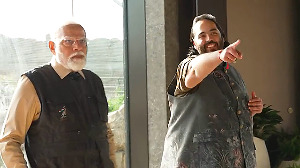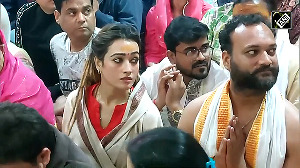Just a few metres separate mother Earth from the speeding plane.
"We are just going to fly through those trees," pilot Mark Jefferies says, pointing the aircraft's nose at an unlikely gap.
"Clench your stomach muscles and you won't black out," he adds as we squeeze through the branches and up into the blue.
The aircraft twists right, exerting enough G-force to deprive any stomach of its contents, before Jefferies flips the plane upside down.
Welcome to Aero GP, aviation's equivalent to Formula One.
The sport, which staged its first Grand Prix in May in Slovenia, features some of the world's top stunt pilots in low altitude races around pylon-marked courses, target bomb runs and virtual dogfights.
Small planes zip through a tight, figure-of-eight course at speeds of up to 500 kph with little more than an arm's length between them, jostling for position and trying to stay alive.
Only years of training to cope with the pressures of stunt or combat flying could prepare pilots for the race, creator Jeff Zaltman said.
CALCULATED NUTS
Add to that a dash of insanity.
"They do have to be nuts, but they are calculated nuts," Zaltman said. "It is faster and tighter than Formula One and there is zero margin for error."
Zaltman hopes the sport will draw mass audiences enjoyed by sports such as soccer and motor racing to aviation, where aerobatic air shows and standard course races entertain but rarely thrill spectators with head-to-head competition.
Even the similar Red Bull Air Race avoids racing pilots directly against each other around its twisting courses.
"Aero GP is very dangerous," Zaltman said. "But it is also safe, these guys are very experienced. We want it to be safe while not looking safe."
Six Aero GPs and a final are pencilled in for the sport's first full season next year, featuring up to 10 international pilots at courses around the world.
Hungary, Dubai, Malta, Lithuania, the Czech Republic, the Isle of Man, India and Slovenia had been earmarked as possible venues and flying enthusiast and Iron Maiden singer Bruce Dickinson would be a television pundit, Zaltman said.
"We are not a circus," he said. "We want to bring aviation sports into the mainstream."
TARGET BOMBING
Once the pilots have battled through intense forces and high risk in the race phase they compete in target bombing and aerobatics, a mix of precision and air gymnastics.
A final round of virtual air combat pits them against each other to test skill and endurance, with cameras strapped to the planes to beam the tussle into viewers' living rooms.
Pilots dart and dive to line each other up in their sights before shouting "Firing, one, two, three, hit" into a radio. If they finish the sentence before their opponent scampers out of the target zone, they have won.
"Once you make the slightest mistake in combat, however long it takes, you know at the time you make that mistake you are finished," Jefferies said, back on terra firma at his airfield among the farms of central England.
Zaltman is planning another event this year before the competition starts in earnest next season, when Jefferies and pilots from nations such as Sweden, Hungary and Slovenia will vie for the sport's first championship title.
Audiences can then watch Gabor "Wild One" Varga, who once performed 256 aerobatic loops in an hour, trying to outmanoeuvre inaugural event winner Zoltan "Red Phantom" Veres at breakneck speed 10 metres above the ground.
"Are we crazy?" Jefferies said. "No, it is just as safe as getting up in the morning. It is 3D freedom."








 © 2025
© 2025